- You cannot add "The Sea And The Snow: Philip Temple" to the cart because the product is out of stock.
-
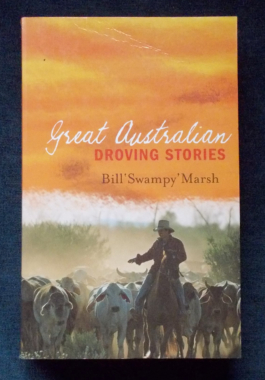 Before utes, trucks, road trains, planes and helicopters, drovers moved stock over the vast Australian distances. It was a life often isolated and difficult, but also filled with adventure and wry humour. Drovers, ringers, duffers and scoundrels: a hard bunch of white, black, half-caste and mixed race folk who knew all the tricks of the trade. Marsh collected these stories in his outback travels and the tales are told in the authentic voices of the men and women who lived the life.
Before utes, trucks, road trains, planes and helicopters, drovers moved stock over the vast Australian distances. It was a life often isolated and difficult, but also filled with adventure and wry humour. Drovers, ringers, duffers and scoundrels: a hard bunch of white, black, half-caste and mixed race folk who knew all the tricks of the trade. Marsh collected these stories in his outback travels and the tales are told in the authentic voices of the men and women who lived the life. -
 The cops of Hollywood Station are still overworked, understaffed, bound in red tape and always amazed by what the boulevards can throw at them. Nate Weiss has transferred from the mid-watch to become a Crow - a Community Relations Officer. The Crows deal with domestic disputes, noise complaints, abandoned shopping trolleys and chronic complainers. It's regarded as a sissie beat - and the pay is better. But when Nate and fellow Crow Bix get mixed up with Margot, a seemingly harmless Hollywood hill-bunny in the middle of an ugly divorce, things aren't quite so uncomplicated. The author was an LAPD detective, so this is Ground Zero writing, wherein he knows of what he speaks. There are quirky characters that couldn't be invented - such as the Indian man who thieved a couple of frocks from a posh boutique then popped one on before heading for Paramount Studios...Flotsam and Jetsam, two surf-frenzied detectives...and Sergeant Treakle, non-affectionately known as Chicken-Lips.
The cops of Hollywood Station are still overworked, understaffed, bound in red tape and always amazed by what the boulevards can throw at them. Nate Weiss has transferred from the mid-watch to become a Crow - a Community Relations Officer. The Crows deal with domestic disputes, noise complaints, abandoned shopping trolleys and chronic complainers. It's regarded as a sissie beat - and the pay is better. But when Nate and fellow Crow Bix get mixed up with Margot, a seemingly harmless Hollywood hill-bunny in the middle of an ugly divorce, things aren't quite so uncomplicated. The author was an LAPD detective, so this is Ground Zero writing, wherein he knows of what he speaks. There are quirky characters that couldn't be invented - such as the Indian man who thieved a couple of frocks from a posh boutique then popped one on before heading for Paramount Studios...Flotsam and Jetsam, two surf-frenzied detectives...and Sergeant Treakle, non-affectionately known as Chicken-Lips. -
 A study of the Gippsland Institute of Advanced Education. In the 60s the Martin Committee recommended the diversification of higher education in Australia through the development of colleges offering sub-degree courses with a strong vocational and technological emphasis. This led to the creation of colleges of advanced education. (CAEs). Using methods drawn from the sociology and anthropology of complex organisations, this study examines the relationship between the internal structure of the Gippsland Institute of Advanced Education and the structure of the environment in which it is located. It attempts to balance ethnographic detail with general social theory in the context of an analysis of the development of the Institute. The findings of the study extend to the character, function and role dilemmas of CAEs in general and of regional colleges in particular and show that the value of their contributio is clear.
A study of the Gippsland Institute of Advanced Education. In the 60s the Martin Committee recommended the diversification of higher education in Australia through the development of colleges offering sub-degree courses with a strong vocational and technological emphasis. This led to the creation of colleges of advanced education. (CAEs). Using methods drawn from the sociology and anthropology of complex organisations, this study examines the relationship between the internal structure of the Gippsland Institute of Advanced Education and the structure of the environment in which it is located. It attempts to balance ethnographic detail with general social theory in the context of an analysis of the development of the Institute. The findings of the study extend to the character, function and role dilemmas of CAEs in general and of regional colleges in particular and show that the value of their contributio is clear. -

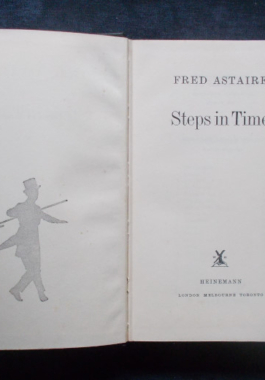
Steps In Time: Fred Astaire
$20.00Dancer, choreographer and film star Fred Astaire (1899-1987) relates his life experiences from his 76 year-long career; from his vaudeville debut with his sister in 1905 to success on the highly-prized Orpheum Circuit; breaking into Broadway in 1917 and the musical stage comedies starring himself and sister Adele in New York and London. When his sister Adele married in 1932, Fred continued on his own, developing a loose-limbed dance style influenced by Bill 'Bojangles' Robinson. It was not instant success in Hollywood; the screen test report from RKO is alleged to have read: 'Can't sing. Can't act. Balding. Can dance.' Yet David O. Selznick felt Fred had charm and his Hollywood debut (on loan from RKO to MGM) was with Joan Crawford in Dancing Lady, then with Ginger Rogers in Flying Down To Rio. He was reluctant be become part of a team again, yet the combination of Astaire and Rogers was wildly successful through nine films. Other partners followed, including Eleanor Powell, considered the most exceptional tap dancer of her generation. He also made his own innovations: Royal Wedding with Jane Powell was advertised as 'See Fred Astaire Dance On The Ceiling!' (Long before C.G.I.) He founded the Fred Astaire Dance Studios; and after retiring from dancing, took dramatic film roles (The Towering Inferno); even a guest appearance in Battlestar Galactica. He was an intensely private man: the Hollywood star who kept his feet on the ground and who never 'went Hollywood.' Illustrated with black and white archival photographs. -
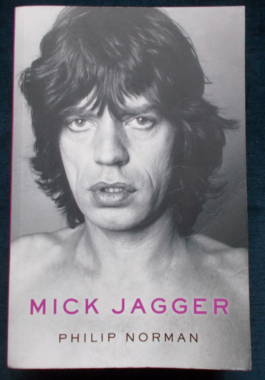 Author Phillip Norman, whose previous bestseller, John Lennon: The Life, was praised as a “haunting, mammoth, terrific piece of work” and whose classic Shout! is widely considered to be the definitive biography of the Beatles, now turns his attention to the iconic front man of the Rolling Stones. This is an extraordinarily detailed and in-depth account of the life and career of one of the most complex superstars of rock music. A must-read for Stones fans. With colour and black and white photos.
Author Phillip Norman, whose previous bestseller, John Lennon: The Life, was praised as a “haunting, mammoth, terrific piece of work” and whose classic Shout! is widely considered to be the definitive biography of the Beatles, now turns his attention to the iconic front man of the Rolling Stones. This is an extraordinarily detailed and in-depth account of the life and career of one of the most complex superstars of rock music. A must-read for Stones fans. With colour and black and white photos. -
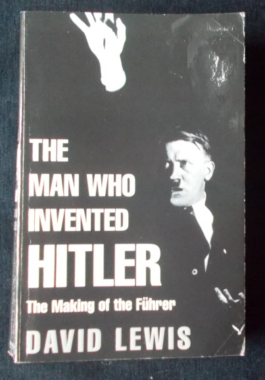 Adolf Hitler emerged from World War I temporarily blinded from a gas attack, never having risen beyond the rank of lance corporal and showing no sings of the leadership that would make him feared throughout the world. Yet within months of the Armistice, he had begun building the Nazi Party with himself as its unassailable personification, the Führer. How did this change come about? The author reveals why Hitler was sent to a psychiatric hospital for treatment for his 'blindness'; how the doctor who treated him, Edmund Forster, deceived his unusual patient and dramatically changed Hitler's personality; and how the man who unintentionally created a monster was finally destroyed by him. Illustrated with black and white photographs,
Adolf Hitler emerged from World War I temporarily blinded from a gas attack, never having risen beyond the rank of lance corporal and showing no sings of the leadership that would make him feared throughout the world. Yet within months of the Armistice, he had begun building the Nazi Party with himself as its unassailable personification, the Führer. How did this change come about? The author reveals why Hitler was sent to a psychiatric hospital for treatment for his 'blindness'; how the doctor who treated him, Edmund Forster, deceived his unusual patient and dramatically changed Hitler's personality; and how the man who unintentionally created a monster was finally destroyed by him. Illustrated with black and white photographs, -

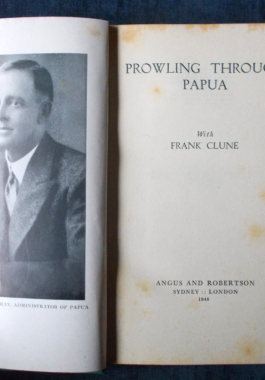 Frank Clune,with all his trademark child-like fascination with the rest of the world takes a journey through the wilds of Papua and New Guinea. When he announced his decision to travel to Papua, he was warned that these tropical paradises were the most malaria-ridden regions of the world, and he should dope himself up with quinine, quinine and more quinine. Being contrary, he didn't. Having accepted invitations from Sir Hubert Murray, then Lieutenant-Governor of Papua offering full facilities and plenty of free ranging, Clune left for a place that was only a name on a map and armed with his life-long motto, 'Try Anything Once.' Illustrated with black and white photographs.
Frank Clune,with all his trademark child-like fascination with the rest of the world takes a journey through the wilds of Papua and New Guinea. When he announced his decision to travel to Papua, he was warned that these tropical paradises were the most malaria-ridden regions of the world, and he should dope himself up with quinine, quinine and more quinine. Being contrary, he didn't. Having accepted invitations from Sir Hubert Murray, then Lieutenant-Governor of Papua offering full facilities and plenty of free ranging, Clune left for a place that was only a name on a map and armed with his life-long motto, 'Try Anything Once.' Illustrated with black and white photographs. -
 The first edition of Dr. Ebenezer Cobham Brewer's Dictionary of Phrase and Fable was published in 1870. Subsequent editions of the original volume have been made throughout the times since, the 15th being published in 1995, to take account of new research and new words entering the language. The linguistic developments of the 20th century, however, have been so rapid and voluminous that a wholly 20th century edition was needed. This was first published in 1991 and, taking its cue from Dr. Brewer's wide-ranging and informed approach, set out to record the language that defines the contemporary age, reflecting all aspects of 20th century life and culture in over 8000 entries, ranging from Abominable Snowman to Zoo Daddy.
The first edition of Dr. Ebenezer Cobham Brewer's Dictionary of Phrase and Fable was published in 1870. Subsequent editions of the original volume have been made throughout the times since, the 15th being published in 1995, to take account of new research and new words entering the language. The linguistic developments of the 20th century, however, have been so rapid and voluminous that a wholly 20th century edition was needed. This was first published in 1991 and, taking its cue from Dr. Brewer's wide-ranging and informed approach, set out to record the language that defines the contemporary age, reflecting all aspects of 20th century life and culture in over 8000 entries, ranging from Abominable Snowman to Zoo Daddy.




